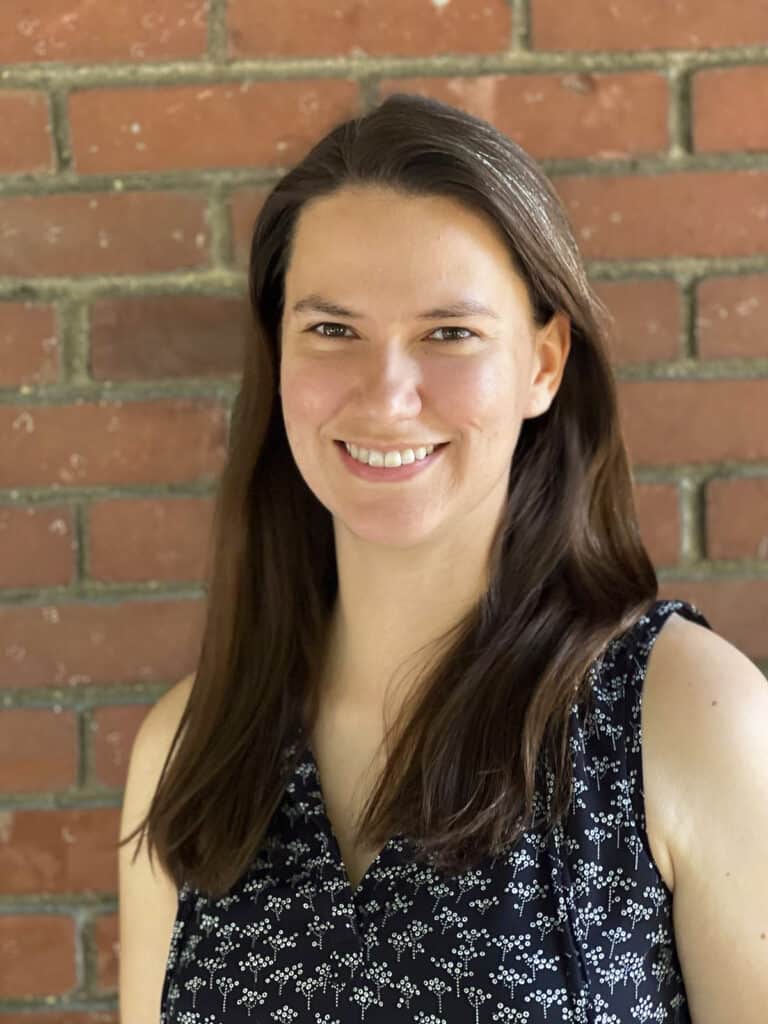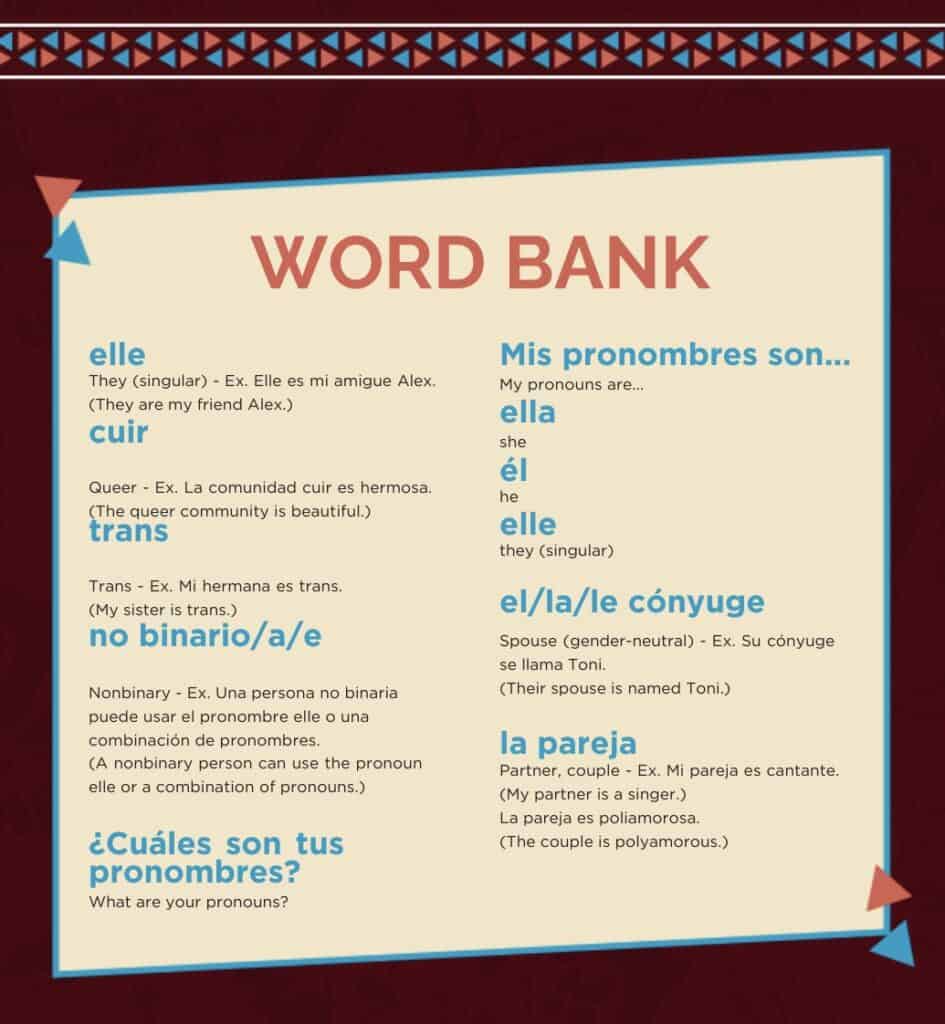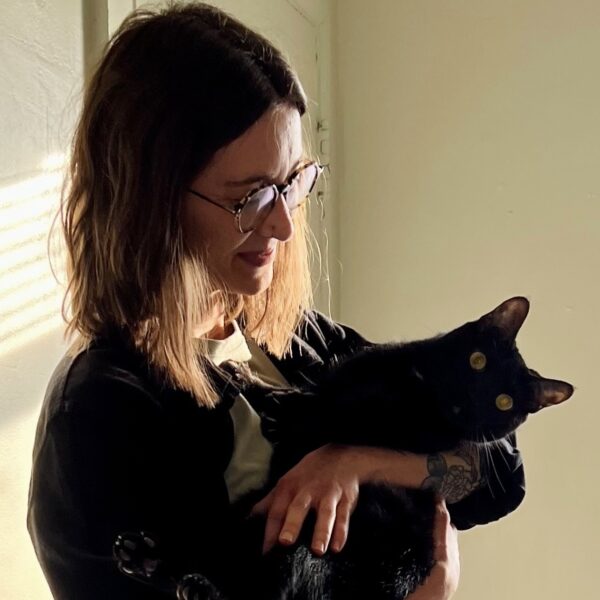Memphis-based Spanish instructor Liz Coffield has been studying Spanish since she was just six years old: she attended a bilingual elementary school, earned a B.A. in Hispanic Studies from Macalester College in St. Paul, Minnesota, and has lived abroad in both Mexico and Spain. Prior to teaching Spanish, Liz worked as an administrative professional and translator in immigration law. Liz is passionate about teaching, passionate about Spanish, and passionate about inclusivity in her classroom.
First, tell us a little about yourself: What sparked your interest in Spanish, and how did you come into teaching this language?
Spanish is not my native or heritage language, but I did start learning it when I was very young and I never stopped! As a child, my parents put me in a Spanish-immersion elementary school where half my day was taught in Spanish and the other half was taught in English. When I was about sixteen years old, I read Isabel Allende’s La Casa de Los Espíritus in Spanish and decided I wanted to study Latin America in college. I went on to get my BA in Hispanic Studies from Macalester College—where I also had the opportunity to study abroad in Mexico.
In 2022, I burned out working as a paralegal at an immigration law firm and decided to take a chance on an idea I had been kicking around for several years. I had previously led adult Spanish classes at the International Institute of Minnesota, where I first fell in love with teaching and creating my own curriculum. Working in immigration law, I had noticed a marked difference in the effectiveness and rapport that Spanish-speaking attorneys had with their clients. I saw launching LC Spanish online as a way I could help improve language access for Spanish-speakers by teaching the language to people centered professionals all over the country.
I just hit my one-year anniversary of teaching with LC Spanish, and I am so proud of the courses I’ve created and the community of students I’ve built.
What got you interested in exploring options for more inclusivity in the language?
I first remember gender- inclusive language being a topic of debate when I was in college. My professors often discussed the feasibility of different variations in terms of pronunciation and grammatical structure, as well as their concerns about inclusive language being confusing to students as they were learning a new language. Now, seven years later, Hispanic and Latin communities around the world have been using and modifying these gender- inclusive structures for some time and I think there is more of a consensus starting to build.
When I started teaching my own classes with LC Spanish, I knew I was going to have students of all genders and identities, so it was important to me that I teach inclusive language throughout. In a time when trans, non-binary, and gender nonconforming folks are under attack, I set out to create a learning environment where students feel safe, recognized, and affirmed. I also want all of my students to have access to the appropriate language when they encounter someone who doesn’t identify only with the masculine or feminine.

What are the challenges to linguistic inclusivity in a language like Spanish? And how are those being addressed?
It’s been a topic of conversation and debate for many years on how to make the Spanish language more inclusive to different genders because Spanish is an inherently machista and binary language. For example, if there is one masculine presence in a group of people, the words for “we,” “y’all,” and “they (plural)” all default to the masculine form, even if the rest of the group is all feminine or nonbinary. Additionally, all nouns are either masculine or feminine (unlike German, for example, which also has a neutral). One early attempt to include more people was using the @ symbol to represent both the masculine and feminine endings. So instead of using “nosotros” (masculine) or “nosotras” (feminine) for “us/we” it would be “nosotr@s” or “Latin@” instead of “Latino” or “Latina.” This is problematic because
it reinforces the gender binary and excludes any other variation in gender, erasing nonbinary people. Another intermediate solution has been to use the letter “x” as a substitute. So for example “nosotrxs” or “Latinx.” This is generally more inclusive, but ends up being pretty much unpronounceable in Spanish. Another issue with these two options is that neither one has a gender neutral subject pronoun (like the singular “they” in English). The consensus I’ve been seeing lately and what I teach in my classes is to replace the masculine or feminine ending with “e” (nosotres, Latine). This also comes with the benefit of a gender neutral subject pronoun, “elle.” It is relatively easy to pronounce, and it generally makes sense grammatically.
In addition to pronouns and new endings for traditionally “masculine” and “feminine” nouns or adjectives, are there other developments happening in inclusive language options for Spanish?
I think this is an area where the language can still grow. I haven’t seen good gender-neutral alternatives to words like “madre” (mother), “padre” (father), “padres” (parents). In many cases though, the gender neutral “e” ending helps modify gendered nouns and adjectives. For example, when talking about professions, you could say “abogade” instead of “abogada” or “abogado” for lawyer.
This is all really hopeful to hear. Do you have an idea of what the reception has been to these additions and adaptations to the language? Are queer communities facing any pushback or criticism over them?
It has been a mixed reception, from what I have observed. I think in the past few years queer Spanish- speaking communities have embraced gender-neutral and inclusive language more and are now getting traction in pushing it out to the broader Spanish- speaking world. But at the beginning lots of people rejected the term Latinx. The Spanish-speaking world is incredibly diverse, and there are conservative, reactionary segments to it. Plenty of Spanish- speakers reject gender- neutral language because they are not accepting of trans and nonbinary identities in the first place. Some people also see the words Latinx or Latine as a U.S.-centric imposition of language and ideology. When I introduce gender- neutral and inclusive language in my classes, I make sure to point out that not every Spanish-speaker my students encounter will know or accept that language.
Is there anything else we should know about inclusive language practices in Spanish specifically, or in non- English languages generally?
A good rule of thumb for inclusivity in any language is to follow the lead of the people who hold the identity you are describing. You can always ask people what words they prefer to use to refer to themselves. This also goes for identities other than gender and sexuality. Spanish is starting to come around on having more respectful and inclusive words for describing race, ethnicity and disability, for example. I think that vocabulary is vitally important to learn as well because of the intersectionality of queer identities.
Additionally, participating in a live Spanish class, and learning another language in general, helps sharpen the skill of correcting yourself when you make a mistake. This is a really necessary skill for being in relationship with people experiencing a transition (using different pronouns, for example). You have to learn to correct yourself in the moment, perhaps study the structure on your own time, and move on quickly from mistakes so they don’t derail a conversation.

Email Liz at lcspanishservices@gmail.com. Visit LC Spanish at lcspanish.com. Connect at facebook.com/LCSpanish or instagram.com/lc_spanish.




